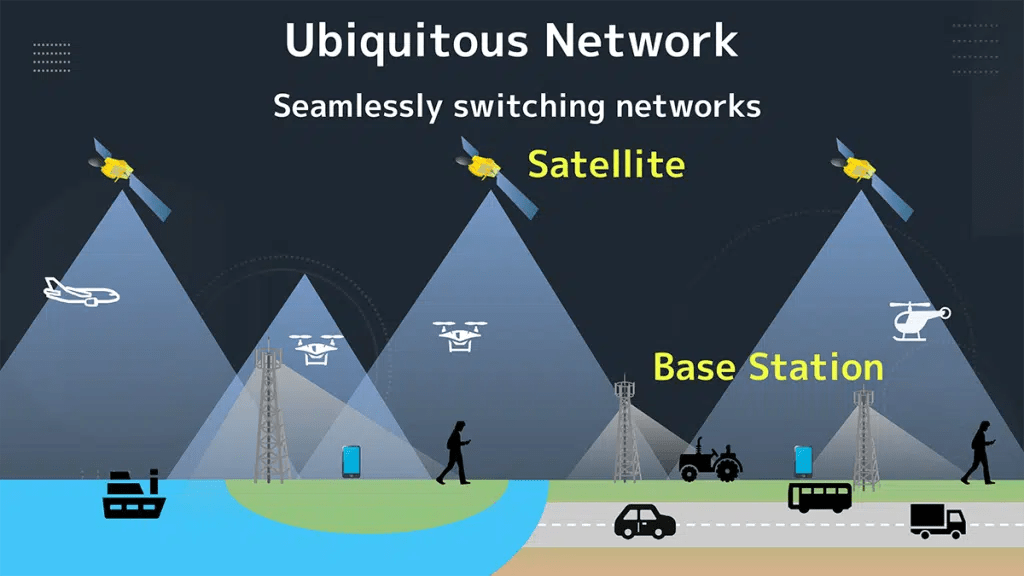Efforts to standardize satellite and terrestrial communications are moving beyond narrowband capabilities toward a universal broadband terminal for seamless, global connectivity.
Geostationary operator Intelsat recently partnered with Softbank, a Japanese internet conglomerate, to essentially integrate satellites with the roaming agreements cellular companies use to keep subscribers connected from country to country.
The partnership is one of the first practical steps Intelsat has taken toward 5G following years of rhetoric about the revolutionary capabilities on the horizon for truly global hybrid connectivity.
It comes a few months after 3GPP, a mobile industry consortium, approved plans to work Ku-band satellite spectrum into a future update for the 5G standards used by smartphones and other mass-market devices.
The standardization work builds upon the integration of space-based narrowband connectivity with 5G, which satellite operators such as Viasat are leveraging to provide basic messaging services to certain smartphones coming out later this year.
Since 2022, Globalstar’s satellites have enabled similar services on the latest iPhones through a closed, proprietary strategy with Apple.
Super MobilityMeanwhile, SpaceX and others are developing constellations that would borrow cellular spectrum to bring connectivity from space to smartphones already in circulation — if they can get permission from each country where they hope to deploy direct-to-device services.
Telcos that have partnered with these direct-to-device satellite operators hope to use the technology to keep their customers connected beyond cell tower coverage.
However, concerns over the interference the services could cause other cellular providers operating in the same country threaten to hold this strategy back.Ken Takagi, Intelsat’s director of business development, said using pre-approved satellite spectrum means its strategy would not require regulatory permission on a country-by-country basis.
And although the universal broadband terminal Intelsat envisages would be slightly bigger than a smartphone, Takagi said it would be professional-grade while still using standardized and mass-produced, off-the-shelf parts.
The device would also enable “broadband connectivity anywhere you go,” he added, compared with narrowband direct-to-device pioneers.
Who would use it?Potential customer markets include maritime, military and others looking for seamless connectivity across multiple geographies.
A major car or truck manufacturer, for instance, could equip the universal terminal on the roof of their vehicle and integrate it with onboard electronics.
“That vehicle could then be sold anywhere in the world,” Takagi said, “and from where it’s sold it could be driven anywhere, and it will always have connectivity. That means that the hardware that’s in the vehicle doesn’t need to be adapted or changed region by region.”
Instead, it would just need to have the right service provider relationships for each region, via an international roaming agreement Takagi sees as a natural evolution for those already in place among cellular providers.
“It makes it a lot easier to achieve a truly connected vehicle experience,” he said.
According to Takagi, Intelsat already has a 5G end-to-end satellite system operational in a laboratory environment, which the operator could integrate with Softbank’s mobile network in Japan relatively quickly.
A universal terminal capable of talking the same language as satellites and terrestrial 5G networks would need to wait for standards to be put in place; however, and that is “something that could materialize in the next three or four years,” he added.
That said, Takagi hinted at a potential workaround that could be in place much sooner.
“I can’t share some secrets here, but we also have some plans to put in place solutions that don’t require that standard,” he continued, “that would still start integrating satellite with terrestrial networking and enabling a more seamless solution than we have today at an earlier date.
“We may see something as soon as next year where we start deploying hybrid satellite and terrestrial solutions.”
This article first appeared in the October 2024 issue of SpaceNews Magazine.
